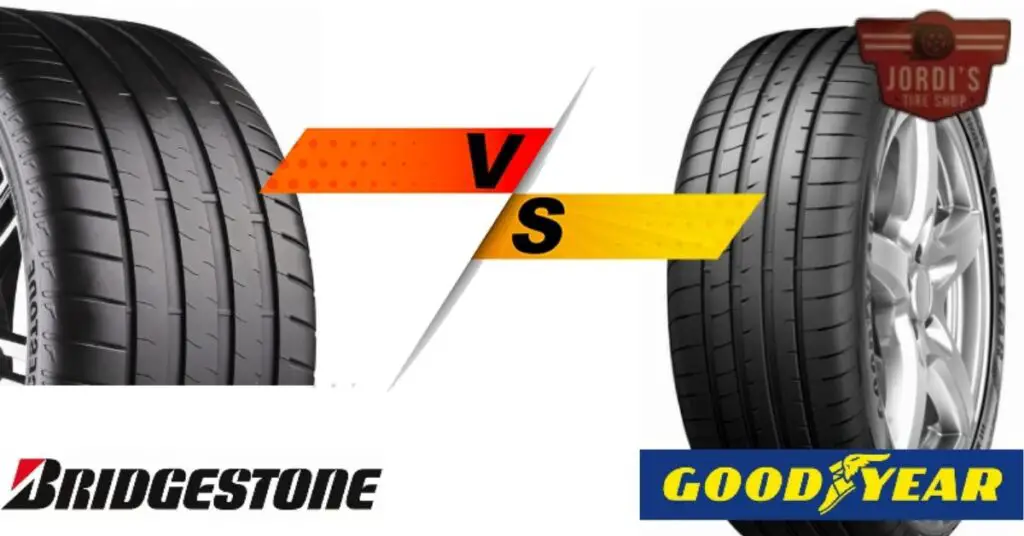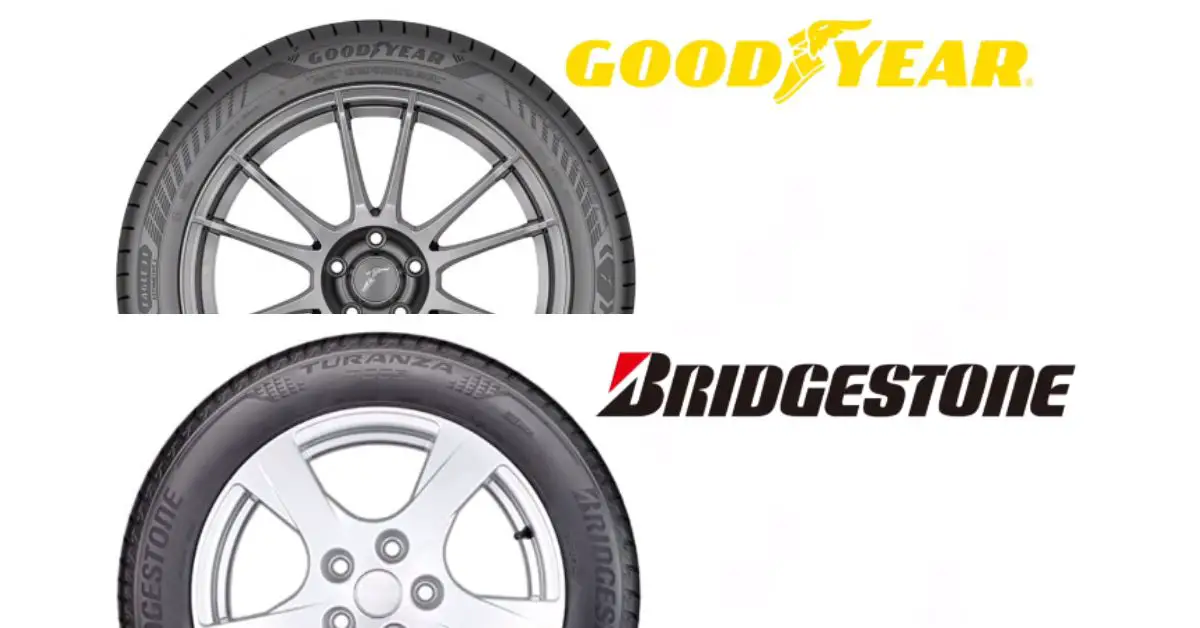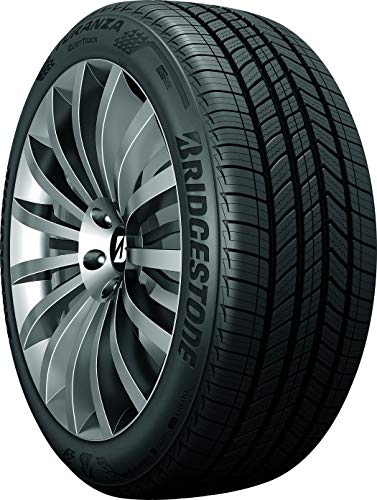Choosing the right tires for your vehicle can be a daunting task, especially when faced with top contenders like Goodyear and Bridgestone. Both brands have established themselves as industry leaders, offering a wide range of options that promise safety, durability, and performance. But how do you decide which is the best fit for your needs?
In this article, we’ll break down the key differences between Goodyear and Bridgestone tires, helping you make an informed decision. From tread life to handling and price, you’ll get a clear picture of what each brand brings to the table. Whether you’re an everyday commuter or a weekend adventurer, understanding these nuances can make all the difference in your driving experience.
Overview of Goodyear and Bridgestone Tires

Goodyear and Bridgestone are top contenders in the tire industry, each offering unique strengths. Understanding their history, brand recognition, market influence, and presence will aid your decision-making.
History and Brand Recognition
Goodyear started in Akron, Ohio, in 1898. Known for their involvement in motorsports, Goodyear has built a reputation for innovation and reliability. They gained prominence with the development of the first tubeless tire and their continuous presence in NASCAR events.
Bridgestone, founded in 1931 in Japan, has become a global entity. They are the largest tire manufacturer by sales revenue. Bridgestone’s recognition escalated through strategic acquisitions and pioneering technologies, like the run-flat tire.
Market Influence and Presence
Goodyear has a significant market presence in North America and is expanding internationally. As a publicly traded company, Goodyear’s financial health bolsters consumer trust. They dominate the tire market with various product lines suited for different vehicles and climates.
Bridgestone boasts a vast global network, supplying original equipment to major automobile manufacturers. Their significant market share stems from strong brand loyalty and continuous innovation. Bridgestone’s focus on sustainability and eco-friendly products also enhances their market influence.
Performance Comparison

Analyzing Goodyear and Bridgestone tires’ performance helps you pick the right tires for various driving conditions. Key categories include all-season tires, winter tires, and performance tires.
All-Season Tires
All-season tires balance performance across diverse weather conditions. Goodyear’s Assurance WeatherReady features soybean oil in the tread compound, enhancing traction in wet and dry conditions (source: Goodyear). These tires provide a smooth, comfortable ride.
Bridgestone’s Dueler H/L Alenza Plus targets SUVs and light trucks, optimizing fuel efficiency and offering long tread life through their high-silica tread compound (source: Bridgestone). This tire caters to drivers seeking durability and consistent performance.
Winter Tires
Winter tires focus on traction in snow and icy conditions. Goodyear’s Ultra Grip Ice WRT uses a specialized polymer tread for enhanced grip on icy roads (source: Goodyear). Sipe density increases control and braking in severe winter weather.
Bridgestone’s Blizzak WS90 excels in winter conditions, utilizing a unique Multi-Cell compound that removes water from the tire surface, improving contact with icy roads (source: Bridgestone). The NanoPro-Tech compound helps retain flexibility in extreme cold.
Performance Tires
Performance tires emphasize handling and speed. Goodyear’s Eagle F1 Asymmetric All-Season maximizes cornering and braking with its asymmetric tread design (source: Goodyear). Traction ridges and a solid center rib enhance stability.
Bridgestone’s Potenza S001 targets high-speed performance. Its high-silica content improves grip on dry and wet surfaces, while the tread pattern reduces road noise for a quieter ride (source: Bridgestone). This tire offers precise steering input and responsiveness.
Understanding these performance aspects helps you make informed tire choices based on specific driving needs.
Technology and Innovation
Both Goodyear and Bridgestone leverage cutting-edge technologies to enhance tire performance, safety, and sustainability.
Goodyear’s Innovations
Goodyear invests heavily in research and development to drive innovation.
- RunOnFlat Technology: Allows you to drive up to 50 miles on a flat tire, improving safety and convenience.
- Weather Reactive Technology: Enhances tire adaptability to changing road conditions. Goodyear’s Assurance WeatherReady uses this technology.
- SoundComfort Technology: Reduces interior vehicle noise levels up to 50%, providing a quieter ride.
- ActiveBraking Technology: Increases the tire’s contact with the road during braking, shortening stopping distances.
Bridgestone’s Innovations
Bridgestone focuses on sustainable and performance-driven technologies for their tires.
- NanoPro-Tech: Optimizes molecular structures to reduce energy loss, improving fuel efficiency and wet performance. Applied in Turanza and Ecopia tires.
- Run-Flat Technology (RFT): Supports the vehicle’s weight even when the tire is deflated, allowing continued driving.
- HydroTrack Technology: Provides superior water evacuation, enhancing wet traction in their Potenza range.
- ENLITEN Technology: Reduces overall tire weight without compromising longevity or performance. Found in various eco-friendly models.
These technologies and innovations showcase how both brands prioritize safety, performance, and sustainability, helping you select tires that meet your specific driving requirements.
Pricing and Availability

Goodyear and Bridgestone tires vary in price and availability across different regions. Factors such as tire type, size, and location influence their cost and accessibility.
Cost Comparison
Goodyear tires generally range from $70 to $600 per tire, depending on the specifications and performance features. For example, the Assurance line tends to be more affordable, while high-end models like the Eagle F1 Asymmetric 3 can be pricier.
Bridgestone tires, on the other hand, typically cost between $80 and $500 per tire. The Turanza series offers budget-friendly options, whereas premium models like the Potenza line command higher prices.
| Tire Brand | Price Range | Examples |
|---|---|---|
| Goodyear | $70 – $600 | Assurance, Eagle F1 Asymmetric 3 |
| Bridgestone | $80 – $500 | Turanza, Potenza |
Availability Worldwide
Goodyear tires are widely available across North America, Europe, Asia, and other regions. Their extensive network of retailers, both online and brick-and-mortar, ensures easy access to a variety of tire models.
Bridgestone is also globally accessible, with a strong presence in the Americas, Europe, and Asia-Pacific markets. Their distribution channels, including authorized dealers and e-commerce platforms, provide consumers with multiple purchasing options.
Consumer Reviews and Feedback

Consumer feedback offers valuable insights into Goodyear and Bridgestone tires. Understanding satisfaction, reliability, warranties, and customer service helps you make informed decisions.
Satisfaction and Reliability
Consumer reviews often highlight both brands’ strengths and weaknesses. Goodyear gets praise for its durability and performance in various weather conditions; for instance, the Assurance model is often noted for reliable all-season traction. Bridgestone, on the other hand, frequently receives positive feedback for comfort and noise reduction, particularly with the Turanza series. In general, users rate both brands highly for reliability with specific preferences based on personal driving experiences.
Warranty and Customer Service
Warranties and customer service experiences play a significant role in consumer decisions. Goodyear provides warranties ranging from 40,000 to 85,000 miles for various models like the Eagle F1 and Assurance series. Many consumers appreciate Goodyear’s prompt and helpful customer service, especially during warranty claims. Bridgestone offers similar mileage warranties, typically between 50,000 and 80,000 miles, covering models like Potenza and Turanza. Customer feedback suggests Bridgestone excels in responsive service and straightforward warranty processes.
By reviewing consumer opinions on satisfaction and reliability, warranties, and customer service, you’ll be better equipped to choose between Goodyear and Bridgestone tires for your specific needs.
Conclusion
Choosing between Goodyear and Bridgestone tires ultimately depends on your specific driving needs and preferences. Goodyear’s durability and all-season traction make it a solid choice for those seeking reliable performance year-round. On the other hand Bridgestone’s focus on comfort and noise reduction appeals to drivers prioritizing a smooth and quiet ride.
Both brands excel in providing robust warranties and responsive customer service ensuring peace of mind. Weighing consumer feedback and considering what matters most to you whether it’s durability comfort or service you’ll be well-equipped to make an informed decision.
Related Posts:
- Yokohama vs Hankook Tires: Performance, Durability, and Pricing Compared
- Yokohama vs Goodyear Tires: Performance, Durability, and Eco-Friendliness Compared
- Yokohama vs Bridgestone: Which All-Terrain Tire Reigns Supreme?
- Nitto vs Michelin Tires: Which Brand is Best for Your Driving Needs?
- Falken vs Michelin Tires: Which Brand Offers Better Performance and Value for Money?
- BFGoodrich vs Michelin: Which Tire Brand is Best for Your Vehicle?
- Goodyear vs Michelin: Which Tire Brand is Best for Your Vehicle?
- Michelin vs Pirelli Tires: Which Brand is Best for Your Car?
- Firestone vs Michelin Tires: A Detailed Comparison of Performance and Value
- Toyo vs Michelin Tires: Which Brand Offers the Best Performance and Value?
- Hankook vs Michelin Tires: Which Brand Offers the Best Performance and Value?
- Goodyear vs Bridgestone Tires: In-Depth Comparison of Performance, Durability, and Customer Reviews
- Continental vs Pirelli Tires: A Comprehensive Comparison of Performance and Value
- Continental vs Bridgestone Tires: Which Brand Offers Better Performance and Durability?






